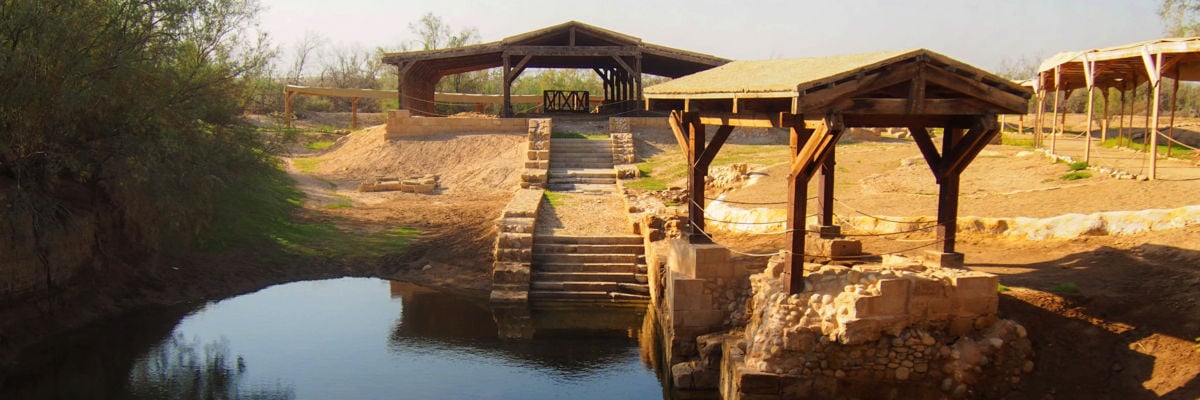
In a conversation with an atheist regarding the evidence for a historical Jesus, it was suggested that I read an email exchange between the skeptical biblical scholar Bart Ehrman and Frank Zindler, former editor of American Atheist Magazine (you can download a PDF of the exchange here). In this exchange, Zindler had supposedly made an airtight case that certain Christian beliefs were copied from the Roman mystery cult of Mithra.
This “exchange” looks more like a case of cyber-stalking on the part of Zindler, as Ehrman responds only a few times and eventually ceases to respond at all. Regardless of appearances, I believe every objection deserves a response, especially claims like these that are so prevalent on the Internet.
Zindler repeats many of the same claims commonly asserted by other mythicists. In this post I will concentrate on his claim that the early Christians copied the practice of baptism from the Mithras cult.
He begins his argument by appealing to the following passage from early Christian writer Tertullian:
The devil [is the inspirer of the heretics] whose work it is to pervert the truth, who with idolatrous mysteries endeavors to imitate the realities of the divine sacraments. Some he himself sprinkles as though in token of faith and loyalty; he promises forgiveness of sins through baptism; and if my memory does not fail me marks his own soldiers with the sign of Mithra on their foreheads, commemorates an offering of bread, introduces a mock resurrection, and with the sword opens the way to the crown. Moreover has he not forbidden a second marriage to the supreme priest? He maintains also his virgins and his celibates (Tertullian, De paraescriptione haereticorum, 40:3-4).
Zindler goes on to explain why this quote is significant:
This shows that Mithraism practiced baptism to wash away (original) sins. As you know, the Romans had the idea of original sin before it came into Christian theology. Tertullian (De Baptismo, 5) notes that “For in certain rites also of an Isis or Mithra initiation is by means of baptismal water.”
In another blog post I demonstrated why the claim that Mithras cult had its own version of the Eucharist is bogus. But what about baptism? Does Zindler have a point here?
Did the Mithraic initiation ceremonies include a baptism to remove sins?
Zindler appeals to a particular quote about the Mithraic use of something like baptism, but there is another quote from Tertullian that sheds even more light on the matter. According to him, the worshippers of Mithras did use water in some way during their initiation ceremonies, but it didn’t end there. Tertullian writes:
Likewise [the Mithraists] honor the gods themselves by washings. Moreover, by carrying water around, and sprinkling it, they everywhere expiate country-seats, houses, temples, and whole cities: at all events, at the Apollinarian and Eleusinian games they are baptized; and they presume that the effect of their doing that is their regeneration and the remission of the penalties due to their perjuries (De Baptismo, ch. 5).
This appears at first glance to be a slam-dunk for the skeptic, but Tertullian wrote this sometime late in the second century. We have no other evidence available to us that suggests the Mithraists practiced anything like Christian baptism prior to this witness.
The early Christians practiced baptism because Jesus Christ instituted it. The existence of an initiation theme in early Christianity does not mean it was borrowed from a pagan religion. As Mircea Eliade, author of a definitive study of pagan initiation rites, explains:
Such a theme could have been taken directly from one of the esoteric Jewish sects, especially the Essenes, concerning whom the Dead Sea manuscripts have now added sensationally to our knowledge. Indeed, it is not even necessary to suppose that an initiatory theme was “borrowed” by Christianity from some other religion (Rites and Symbols of Initiation, p. 116).
Some Jewish sects were already familiar with baptism. Pope Benedict XVI agrees that the people of Qumran, where the Dead Sea scrolls were found, may have influenced both John the Baptist and Jesus. He then goes on to explain how this new baptism differed from other rites: “The baptism that [John the Baptist] enjoined is different from the usual religious ablutions. It cannot be repeated, and it is meant to be the concrete enactment of a conversion that gives the whole of life a new direction forever” (Jesus of Nazareth, p.14).
This is a far cry from Tertullian’s description of pagans’ baptizing everything from their temples to their chairs, and seeking it out repeatedly as reparation for any wrongdoing. While initiation rites do exist in other religions, Christian baptism is unique among them.
What about original sin?
Zindler also claims that the Romans had developed the concept of original sin before it appeared in Christian theology. Like the claim that Christians copied baptism from Mithraism, this too has no basis in historical fact.
Broadly defined, sin can be understood as an offense against a religious or moral law. In that sense, virtually every religion that has ever existed recognizes “sin” in one way or another. But the Christian belief in original sin is very specific. The Catechism of the Catholic Church explains:
By yielding to the tempter, Adam and Eve committed a personal sin, but this sin affected the human nature that they would then transmit in a fallen state. It is a sin which will be transmitted by propagation to all mankind, that is, by the transmission of a human nature deprived of original holiness and justice. And that is why original sin is called “sin” only in an analogical sense: it is a sin “contracted” and not “committed”—a state and not an act (CCC 404).
This concept simply did not exist within the Roman religions—especially not during the early days of Christianity—which makes it highly unlikely that the Christians copied this practice from their Roman contemporaries.
Early-twentieth-century theologian John Gresham Machen sums this point up nicely:
The various ablutions which preceded the mysteries may have been often nothing more than symbols of cleansing; and such symbolism is so natural that it might appear independently at many places. It appears, for example, highly developed among the Jews; and in the baptism of John the Baptist it assumes a form far more closely akin to Christian baptism than in the washings which were connected with the pagan mysteries. The evidence for a sacramental significance of the ablution in the mysteries, despite confident assertion on the part of some modern writers, is really very slight (Origins of Paul’s Religion, p. 280).
Where to learn more
I address the many bogus Jesus/Mithra comparisons in the May-June 2013 issue of Catholic Answers Magazine. If you are interested in reading more, you can check it out here.



